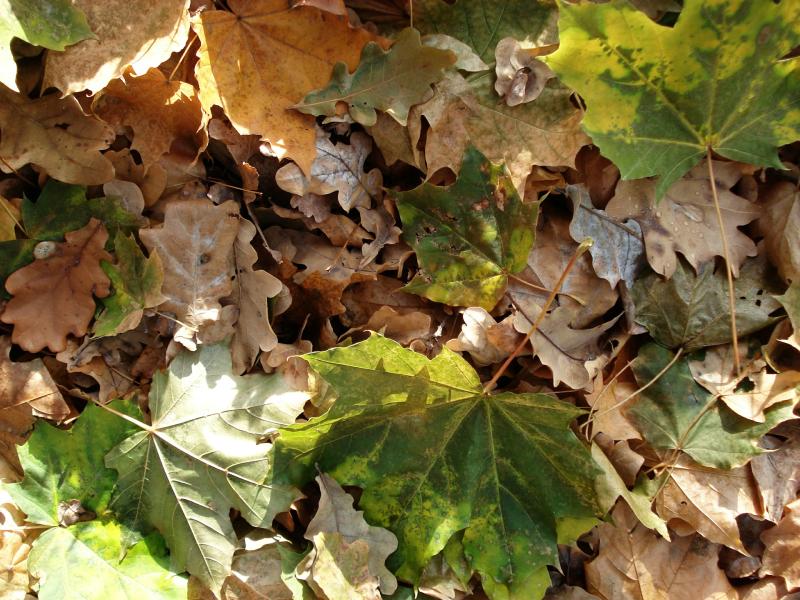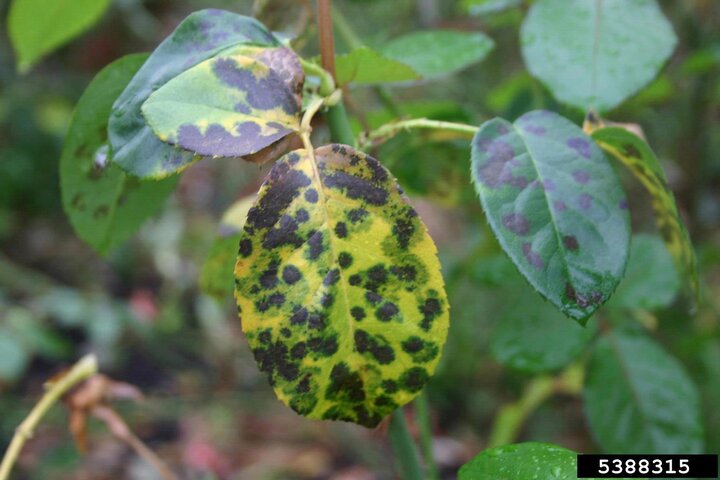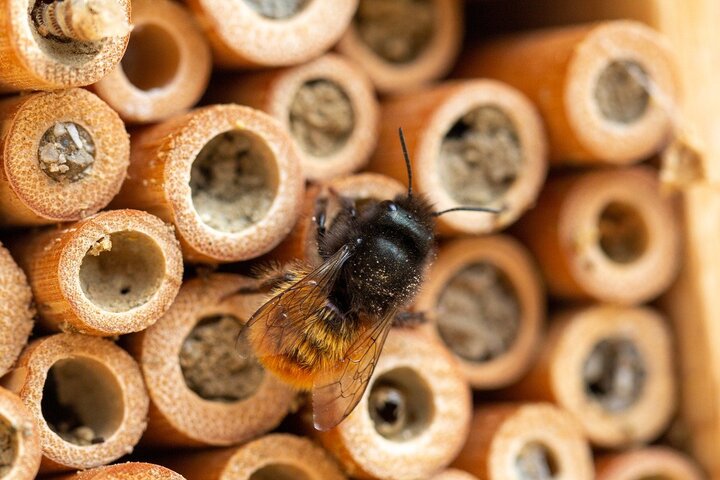Sarah Browning, Extension Educator

Leaf litter provides the natural benefits of mulch in landscape beds and increase habitat quality for soil-nesting bees. PIxabay.com
Many gardeners are starting their fall garden and landscape clean-up - which is good and bad. Garden sanitation, if insects or diseases were a problem this year, is an important step to reduce problems next year. But we need to balance pest control with allowing habitat for beneficial insects and pollinators. So, how can that be done?
Clean Up for Problem Plants
Many disease organisms carry over from one season to the next on infected branches, leaves or fruits. Diseased leaves fall to the ground beneath the infected plant and, if they are not removed and discarded, will produce new fungal spores or bacteria to reinfect plants the following growing season. Removing infected plant debris reduces the disease pressure the following season. Keep this control method in mind for common shade tree foliage infections, including Anthracnose, powdery mildew, apple scab, Septoria and many other leaf spot pathogens. Black spot of rose is another very common fungal pathogen.
In a similar manner, fruit tree disease problems often overwinter on fruit "mummies"; dried infected fruits that may remain in the tree or fall to the ground beneath the tree. If mummies are still in the tree or beneath it, they serve as an infection source the following year.
Diseases also remain active from year to year through infected twigs, branches or cankers. Fireblight is one of the most serious fruit and ornamental diseases which overwinters on infected woody tissue. Fireblight is a bacterial disease which infects and kills twigs and branches, most commonly during spring and early summer. However, it can also infect the mature bark of older branches or tree trunks; this infected bark is called a canker and often serves as a source of additional spores or bacteria, allowing the disease to progress throughout the plant during a growing season or reinfect its foliage or new branches in future years. Unfortunately there are many other disease pathogens that can infect woody branches or bark and cause cankers, such as brown rot of peach, apricot, plum and cherry.
Many insects overwinter on plants they attacked the previous summer or nearby plant debris, such as iris borer (overwinter as eggs on iris leaves or nearby plants) or common stalk borers (overwinter as eggs on nearby grass stems or weeds). Cucumber beetles overwinter as adults in plant debris and other protected areas. Common fruit insects – plum curculio overwinters as adults in plant debris, cherry fruit fly inside fallen fruits.
Sanitation Steps
In areas where insects/diseases were a problem this year, sanitation is very important for reducing disease and insect pressure in your garden or landscape each year. Important steps include the following.

1. Rake up and discard or burn all debris beneath infected plants each fall, including leaves and fruit. This includes infected trees, shrubs and ornamentals such as peonies. In the vegetable garden, remove any disease infected plants like tomatoes or peppers and rake up as much old foliage as possible along with all discarded fruits.
2. Prune out and destroy all dead or diseased branches and twigs each spring. Dead or diseased branches can be pruned out at any time of year. If you suspect the branches were killed by a disease, cuts should be made at least 4-6 inches below the margin of visible infection.
3. If your tree is susceptible to fireblight or has a history of infections and you are pruning before the tree is fully dormant, be sure to clean the pruners between each cut. Clean pruners by dipping them in a 10% bleach solution (9 parts water to 1 part bleach) between cuts. With a known fireblight infection, make cuts 8-12 inches below the margin of visible infection. Dry and oil tools after use to prevent rust.
4. In Iris plantings, remove old dead foliage before April 1.
5. Black spot of rose can be reduced by removing all infected leaves and mulch beneath plants in fall. Prune out canes with dark colored lesions, then reapply a fresh layer of new mulch.
6. Do not compost this material, because most home compost piles do not get hot enough to kill all pathogens.
But Don’t Be a Neat Freak
To achieve a good balance for beneficial insect habitat, don't be a neat freak in all the other areas of your landscape where insects and diseases were not a problem. Consider allowing your gardens to have a slightly more natural, unmanicured look. Getting rid of all that leaf debris is not only a waste of good organic material, it decreases your population of beneficial insects.

- Neat garden beds ready for winter.
- Management of next year's insect/disease problems,
- Maintained great habitat for bees, pollinators and other beneficial insects.
Images
- Black spot on rose, William Fountain, University of Kentucky, Bugwood.org
- Hollow stems of grasses and perennials in the garden can be used by many bee species as nesting and overwintering sites. Pixabay.com.
Search Our Archive
Associated Video
Fall Garden Clean Up
UNL Extension Landscape Horticulture Specialist Kim Todd has tips for good fall garden clean up and sanitation. Feb 2016.